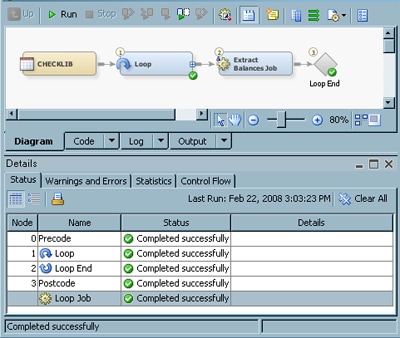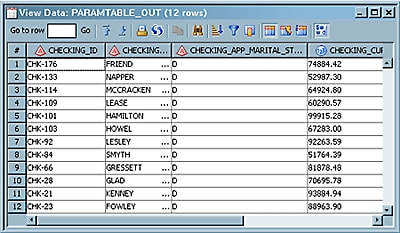Creating and Running an Iterative Job
Solution
Tasks
Create the Iterative Job
-
Create the control table and the parameterized job that are included in the iterative job. See Creating a Control Table and Creating a Parameterized Job for more information.
Variation: Add the Library Input and Library Contents Transformation Directly to a Job
You can
customize the basic process by adding the library input and the Library
Contents transformation directly to an iterative job, as shown in
the following example.
When the
input library and the Library Contents transformation are added to
the iterative job, the contents of the control table are dynamically
generated each time that the iterative job is run. This arrangement
ensures that the list of tables in the control table is refreshed
each time that the job is run. It also ensures that the tables are
processed iteratively as each row in the control table is read. For
information about control table jobs, see Creating a Control Table.
Run the Iterative Job and Examine the Results
After
you run the iterative job, you can find output for the completed iterative processing in the output table for the parameterized
job. In addition, the Loop transformation provides a status and run-time
information in the temporary output table that is available when it
is included in a submitted job. Perform the following steps to run
the job, review the status data, and examine the iterative job output:
Copyright © SAS Institute Inc. All rights reserved.




